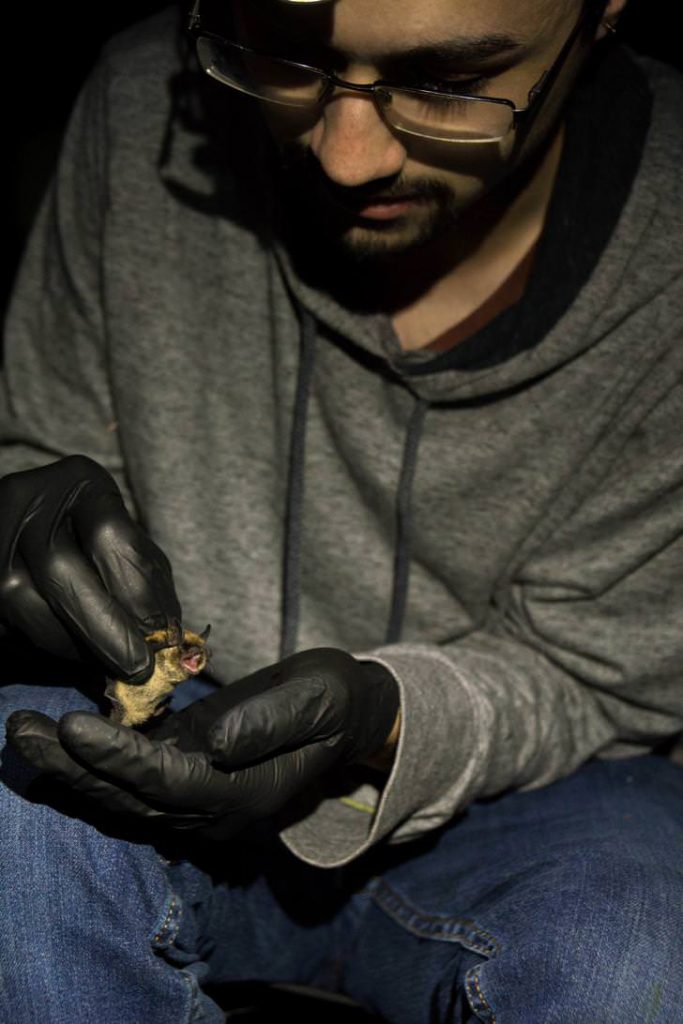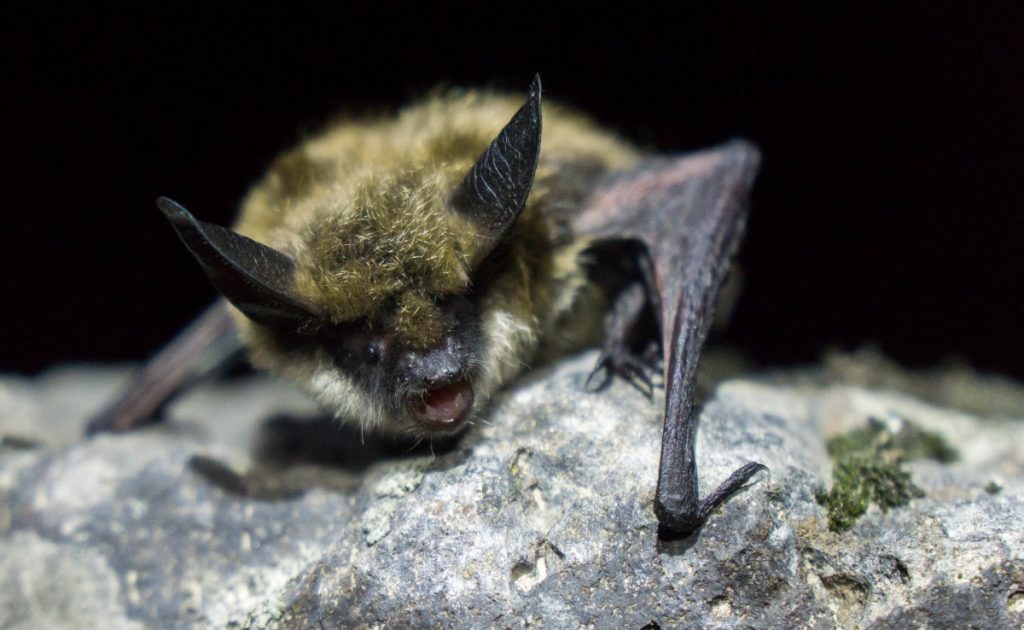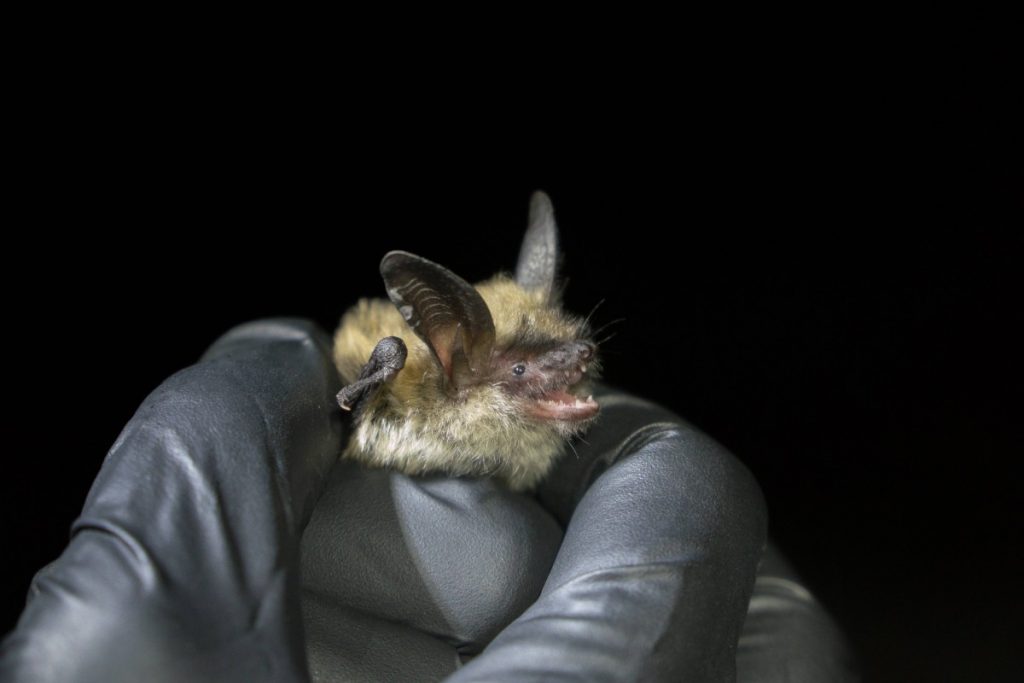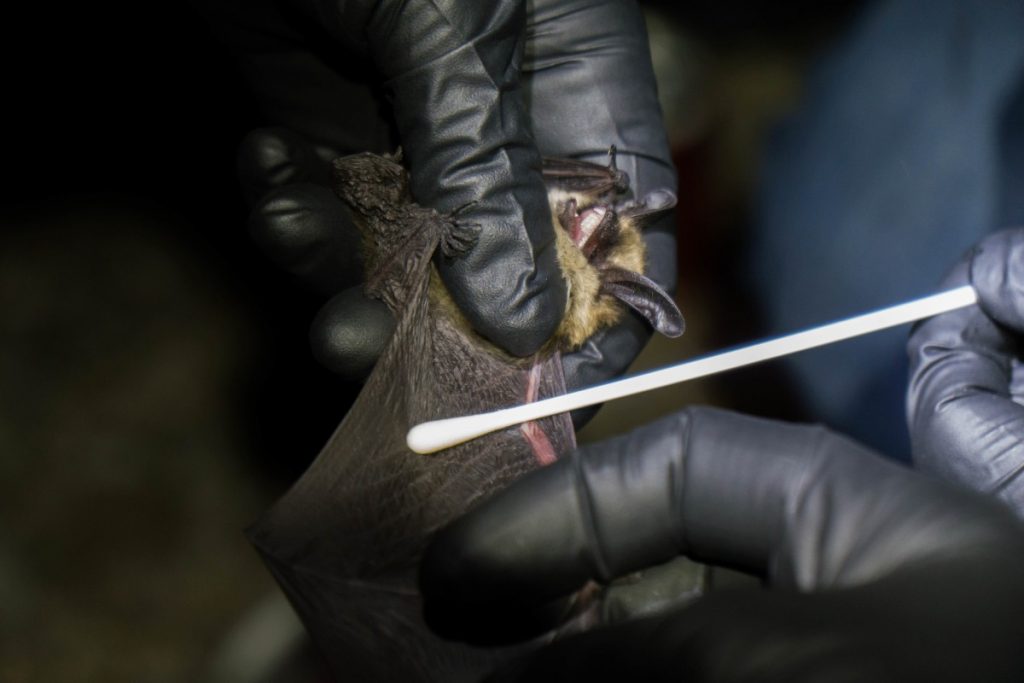Nick Fontaine can’t comprehend why anyone would be afraid of bats.
Bats get a bad rap. They’re villainized throughout literature, and are feared as bloodsuckers — as terrifying shrieking things that get tangled up in long hair.
But to Fontaine, who is completing his Master of Science in Environmental Science, and to the team of researchers that he’s working alongside, bats are not only adorable, they’re vital to our ecosystem, and it’s time to push aside those irrational fears and do everything possible to save a species at risk.
Fontaine is working with a team of researchers led by TRU’s Dr. Naowarat Cheeptham, Dr. Cori Lausen of the Wildlife Conservation Society Canada, and Dr. J.P. Xu of McMaster University to stop White-Nose Syndrome (WNS) from decimating the western North American bat populations. Cheeptham’s team also includes research assistant Aaron Wong, who graduated from TRU last spring. They’re using the principal of probiotics — the application of good bacteria — in order to prevent the fungus that causes WNS.
The research is groundbreaking. Fontaine and Wong spent part of their summer capturing bats that were then taken to an enclosure at the BC Wildlife Park. Once in the enclosure, the bats were separated into treatment and control groups. Multiple times each week, Fontaine and Wong applied a probiotic to the treatment bats. The probiotic was developed in Dr. Xu’s lab based on bacteria that Cheeptham and her team discovered on the wings of healthy bats. Lab tests have shown the probiotic is effective at inhibiting the growth of the deadly fungus.
Results from this first small-scale study are expected within the next two weeks, and another larger study is expected to begin next spring.
“We are the first to do this kind of work and we do not have any protocol from any other studies. We’re problem-solving every step of the way, and it’s teaching us all how to improvise and be flexible,” said Cheeptham.
Currently, the team is applying the probiotic to the bat wings as a liquid, but when they move into the larger trial next year, they’ll need to find a way to create a probiotic powder. Fontaine will spend much of his time this winter focused on developing a powder that will be applied to the bases of bat boxes, so the bats can self-apply the compound each time they enter the box.
While Fontaine was comfortable working with animals, having focused on animal biology as an undergraduate, Wong was more comfortable working in the lab. The pair have both been forced out of their comfort zones.
“I was mainly a lab researcher, but now I’ve gone out in the field to catch bats and it’s been an incredible experience. Handling the bats has been one of the most crazy and amazing things about this project,” Wong said.
Everyone who is participating in the project is aware of its potential, and all hear the clock ticking.
“We’re in a bit of time crunch. White-Nose Syndrome is already on the West Coast — it’s only a matter of time before it gets to BC. It’s this impending doom feeling, and we’re working hard to see if we can find the science to prevent it. There’s still a chance that we could potentially save the lives of western bats,” Wong said.
The three-year project receives funding from the Bats for the Future Fund, BC’s Habitat Conservation Trust Foundation, a TRU Internal Research Fund Grant, and received one of the first Tri-University Major Project Collaboration Grants. The enclosure at the BC Wildlife Park was built by Thomas Haag, Chair of TRU’s School of Trades and Technology, and funded by the Kamloops Naturalists Club.
Pseudogymnoascus destructions, the pathogen responsible for WNS, was first found on hibernating bats in New York in 2006. It has since spread to 36 states and seven Canadian provinces, and killed more than 6 million bats.

Nick Fontaine, MSc., is working with a TRU-based research team to develop and apply a probiotic solution to prevent White Nose Syndrome.





